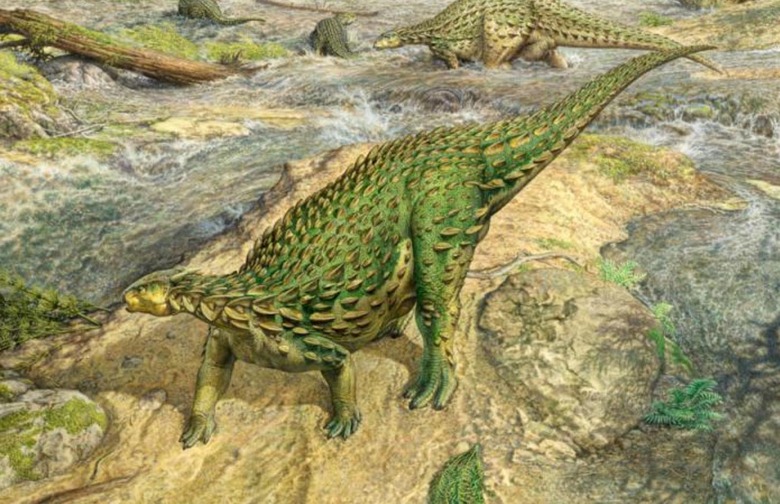The Only Complete Dinosaur Skeleton Ever Discovered Has Finally Been Assembled
- The only complete dinosaur skeleton ever discovered had been sitting in storage for 160 years before it got the attention it deserved.
- Over the past three years, researchers have pieced together the skeleton and learned a lot about its history.
- The animal, a Scelidosaurus, was closely related to ankylosaurs.
Over the centuries, researchers have found many, many dinosaur fossils. We've learned about hundreds of species that lived millions and millions of years ago thanks to those fossilized bones... but how many complete dinosaur skeletons would you guess there are? A hundred? Maybe a thousand? More?
Believe it or not, the overwhelming majority of skeletons found are incomplete in one way or another. Scientists have to piece together parts from various specimens to get the full picture of what a dinosaur looked like. And when it comes to complete dinosaur skeletons, there's just one. Yes, one.
The dinosaur, which is a Scelidosaurus, isn't exactly a new find. In fact, it's been over a century and a half since it was first uncovered on the southern coast of England. It was discovered in an area that is now well known for its incredible age, with rocks dating back nearly 200 million years.
When it was first discovered, it was sent to the British Museum under the care of a man named Richard Owen. As the University of Cambridge explains, Owen penned a couple of papers about the skeleton and left it at that. He didn't attempt to piece it together or further study it and moved on to whatever was next.
"Over the past three years, Dr. David Norman from Cambridge's Department of Earth Sciences has been working to finish the work which Owen started, preparing a detailed description and biological analysis of the skeleton of Scelidosaurus, the original of which is stored at the Natural History Museum in London, with other specimens at Bristol City Museum and the Sedgwick Museum, Cambridge," the university says in a press release.
With years of additional research done, we now know that the animal was related to the ankylosaurs, which were covered in thick boney armor and sported clubbed tails. Additionally, the new effort has resulted in the skeleton finally being assembled for the first time since it was uncovered.
"It is unfortunate that such an important dinosaur, discovered at such a critical time in the early study of dinosaurs, was never properly described," Dr. David Norman of Cambridge's Department of Earth Sciences said in a statement. "It has now – at last! – been described in detail and provides many new and unexpected insights concerning the biology of early dinosaurs and their underlying relationships. It seems a shame that the work was not done earlier but, as they say, better late than never."
